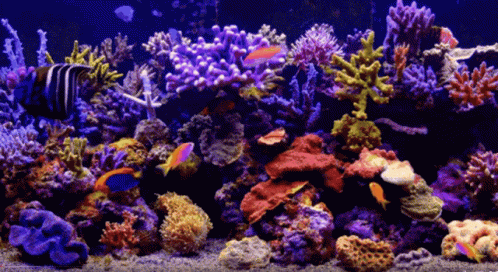Troubleshooting filtration issues in advanced systems requires a proactive approach. Monitor filter pressure to catch clogging early, and inspect filters regularly for debris buildup. Address membrane fouling through chemical cleaning and optimized operating conditions. Stabilize flow rates using reliable measurement and control systems. Resolve persistent pressure drop problems with routine maintenance and properly sized filters. By taking these steps, you can enhance the efficiency and performance of your filtration system. To dive deeper into resolving common filtration challenges, continue exploring the detailed solutions outlined in the research.
Key Points
- Properly select and size filters to ensure effective filtration and prevent clogging issues.
- Regularly monitor filter pressure, inspect for debris accumulation, and perform timely filter replacements to maintain optimal performance.
- Implement proactive membrane cleaning techniques, such as chemical cleaning and backwashing, to mitigate fouling and extend membrane lifespan.
- Stabilize flow rate fluctuations through the use of reliable flow measurement and control systems, including flow meters and feedback loops.
- Address persistent pressure drop issues by performing regular maintenance, ensuring proper filter sizing, and addressing contaminant accumulation to enhance overall filtration efficiency.
Common Filtration Problems
Ineffective filtration, clogged filters, and deterioration are the most common problems with filtration systems.
To prevent clogged filters, it's essential to stay on top of regular filter maintenance, including rinsing out filter media and checking for blockages.
Improper filter selection or sizing can lead to ineffective filtration, allowing contaminants to pass through.
Additionally, over time, filters can become damaged or deteriorate, compromising their ability to effectively remove contaminants.
Regularly monitoring the condition of filters and replacing them as needed is crucial for maintaining ideal performance.
Diagnosing Clogged Filters
Clogged filters are typically caused by a buildup of debris or a problem with the system components.
To diagnose the issue, start by monitoring the filter pressure and inspecting the filter for visible signs of clogging.
If the filter appears clean, the problem may stem from blockages in the piping or a malfunctioning pump.
Upgrading to a more suitable filter can also help prevent future clogs.
Addressing Membrane Fouling
Membrane fouling is a prevalent issue in filtration systems that can lead to reduced permeate flux, increased transmembrane pressure, and diminished product quality. To address this challenge, a proactive membrane maintenance strategy is essential.
Fouling prevention can be achieved through regular cleaning and monitoring. Common fouling types and suggested mitigation techniques are outlined in the following table:
| Fouling Type | Cause | Mitigation Technique |
|---|---|---|
| Organic | Organic matter, microorganisms | Periodic chemical cleaning |
| Inorganic | Mineral salts, metal oxides | Acid or alkali cleaning |
| Particulate | Suspended solids | Backwashing, pre-filtration |
| Biological | Biofilm formation | Biocide treatment, UV disinfection |
Addressing membrane fouling requires a thorough approach, including feed pre-treatment, optimizing operating conditions, and implementing a robust cleaning regimen. By staying proactive with membrane maintenance and fouling prevention, the lifespan of the filtration system can be extended, and consistent performance can be maintained.
Stabilizing Flow Rate Fluctuations
Stabilizing flow rate fluctuations is crucial for maintaining the efficiency and consistency of a filtration system. Proper flow measurement and control systems can address this issue, ensuring consistent performance and product quality.
Understanding how protein skimmers work can further enhance the filtration strategy by effectively removing dissolved organic compounds.
Implementing reliable flow meters, responsive control valves, pumps, or variable frequency drives, and feedback loops in the control system can stabilize the flow rate and optimize the filtration process, avoiding disruptions caused by fluctuations.
Resolving Pressure Drop Issues
Persistent pressure buildup within the filtration system can hamper its ideal performance.
Regular maintenance is vital; essential tips for monthly aquarium filter maintenance can greatly improve performance and prevent pressure issues.
The three common causes of pressure drop issues are:
(1) insufficient filter maintenance,
(2) improperly sized filters, and
(3) contaminant accumulation.
Addressing pressure drop issues proactively can help optimize the filtration system's performance and extend its lifespan.
FAQs
How Do I Properly Dispose of Used Filter Media?
Properly dispose of used filter media to minimize environmental impact. Check local regulations and recycle or dispose of it safely. Don't toss it in the trash – that could harm the environment. Take the responsible route.
What Are the Long-Term Maintenance Requirements for Filtration Systems?
Your filter system requires regular maintenance to guarantee peak performance. Replace filter media when it reaches the end of its lifespan, and consider system upgrades to improve efficiency and extend the life of your filtration system.
Can I Reuse or Regenerate Spent Filter Elements?
You can often reuse or regenerate spent filter elements, which is a cost-effective alternative to replacing them entirely. This can help extend the lifespan of your filtration system and reduce ongoing maintenance costs.
How Do I Integrate Filtration With My Existing Process Equipment?
When integrating filtration, carefully consider filter selection to guarantee system compatibility. Consult with filtration experts to select the right filter type and configuration that seamlessly integrates with your existing process equipment, minimizing disruptions and optimizing performance.
What Are the Best Practices for Storing and Handling Filter Components?
Store filter components in a clean, dry environment. Handle them gently to avoid damage. Follow the manufacturer's instructions for proper storage and handling to guarantee peak performance and longevity of your filtration system.
The Bottom Line
You've learned how to troubleshoot common filtration issues in advanced systems. By diagnosing clogged filters, addressing membrane fouling, stabilizing flow rate fluctuations, and resolving pressure drop issues, you can optimize your filtration process and maintain efficient operation. Remember, regular maintenance and vigilant monitoring are key to preventing and resolving filtration problems. Apply these strategies, and you'll keep your system running smoothly.
